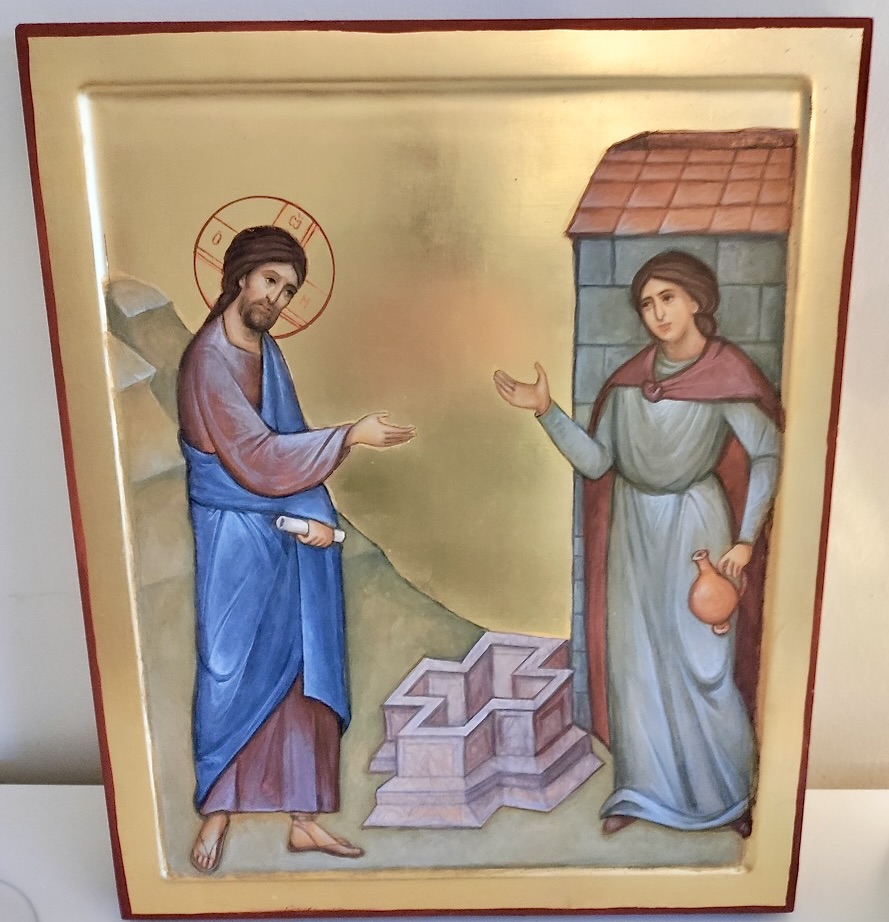John 4:4-42

At a recent Lent Bible study, we spent some time discussing our “go to” passages in the Bible – the stories, poems and songs that we turn to again and again. We also decided it was important to read and reflect on the passages that we are not so drawn to or shy away from – not all the stories in the Bible are easy!
The story of the woman who meets Jesus at the well has always been one which I have been drawn to. I had the great privilege of visiting Jacob’s Well where this meeting happened when I was visiting the Holy Land. So when a very generous friend gave me a gift which enabled me to commission an icon by the icon writer, Katherine Sanders, I chose the image of the woman meeting Jesus at the well.
This encounter happens when Jesus and his companions stop at the well whilst travelling through Samaria. The disciples go to buy food but Jesus stays behind. A woman comes to draw water from the well and is surprised when Jesus asks her for a drink. Jews and Samaritans famously did not associate with one another. Jesus tells the woman that if she knew who he was she would have asked him for living water and that everyone who drinks of this water will never be thirsty. To which she responds “give me that water so that I might never be thirsty again or have to keep coming here to draw water”.
Jesus also seems to know a lot about her – her personal circumstances, the fact that she is a woman who, at that time, in that society, might be considered to have a rather dubious reputation given that she has had several husbands and is now living with a man she is not married to.
The woman recognises that Jesus is the long-awaited Messiah. She goes and tells her fellow villagers about him and we are told that many believed in Jesus because of her. Like a number of women who appear in the Gospels, we are not given a name for the woman although I learnt from Katherine that in the Orthodox tradition she is revered as Saint Photini.
This story means a lot to me because it shows us that Jesus is willing to reach out to everyone, regardless of who we are, our backgrounds, or our past. I get a real sense when reading this passage that Jesus gives this woman his full attention and I wonder how many people in her life would have done that. It makes me realise that whatever mistakes I feel I have made in my life, the times I have got it wrong, Jesus is reaching out to me too. He wants me to turn to him. The icon shows Jesus, his hand outstretched to the woman.
It also tells me that we also have to share Jesus’ message of love, however unworthy or anxious we might be about that. This woman was probably ostracised by many in the village (is that why she was going to the well on her own rather than with the other women?) but she had the courage to approach others and urge them to come and see Jesus. And many believed because of her testimony.This story for me is a powerful reminder of God’s love and grace – and that love and grace is accessible to all of us and this is not a message to keep to ourselves but to share with others. Rev’d Canon Andrea Jones
